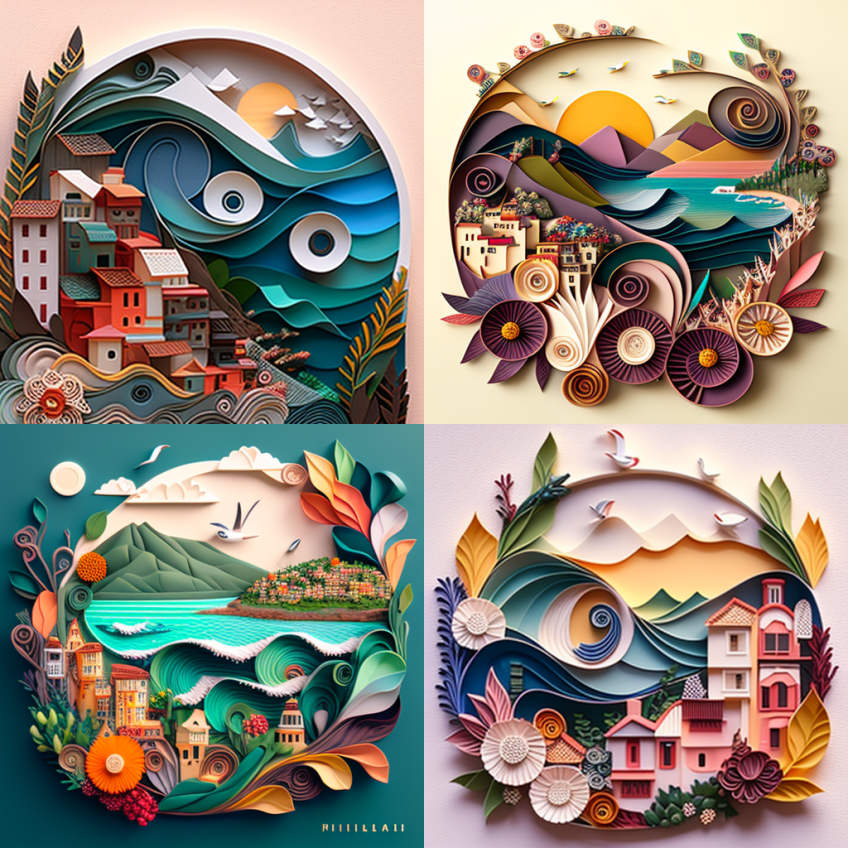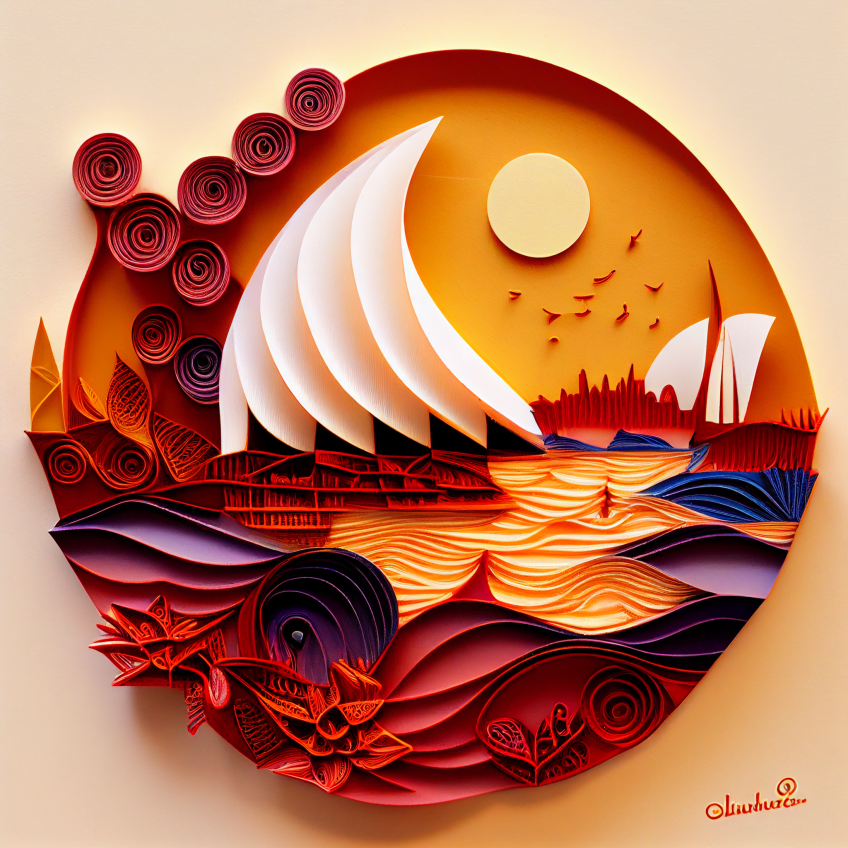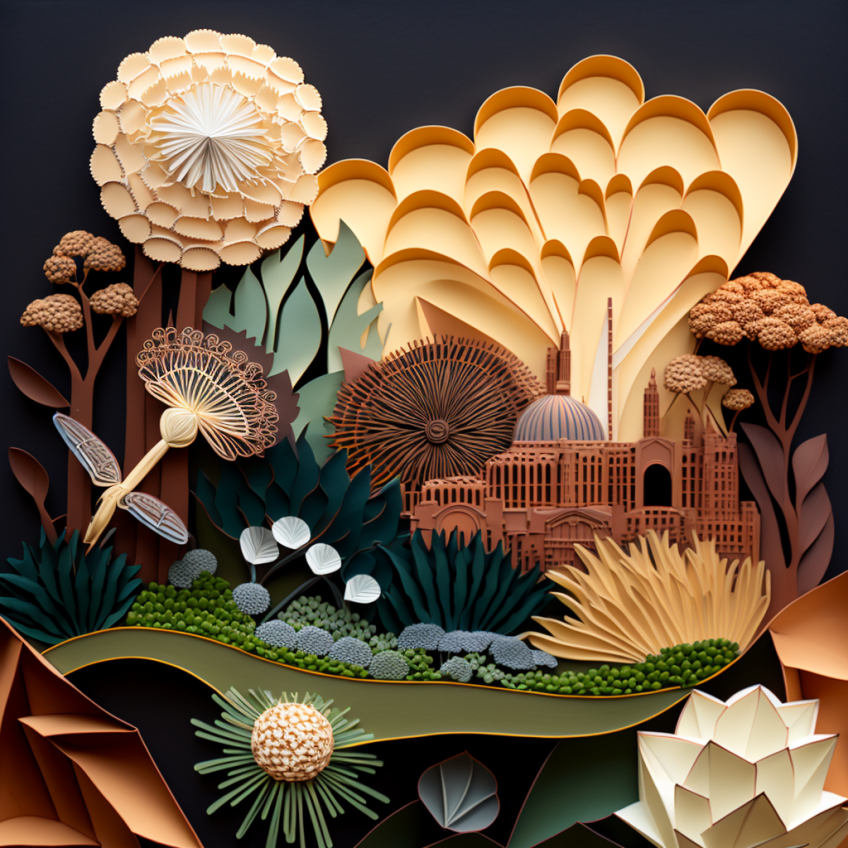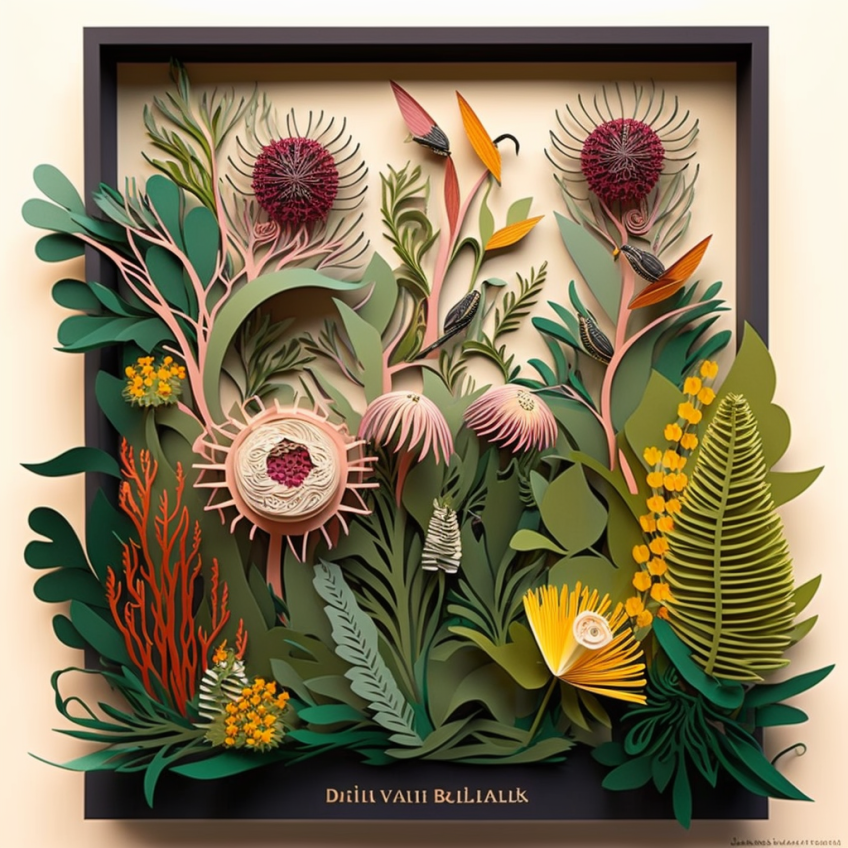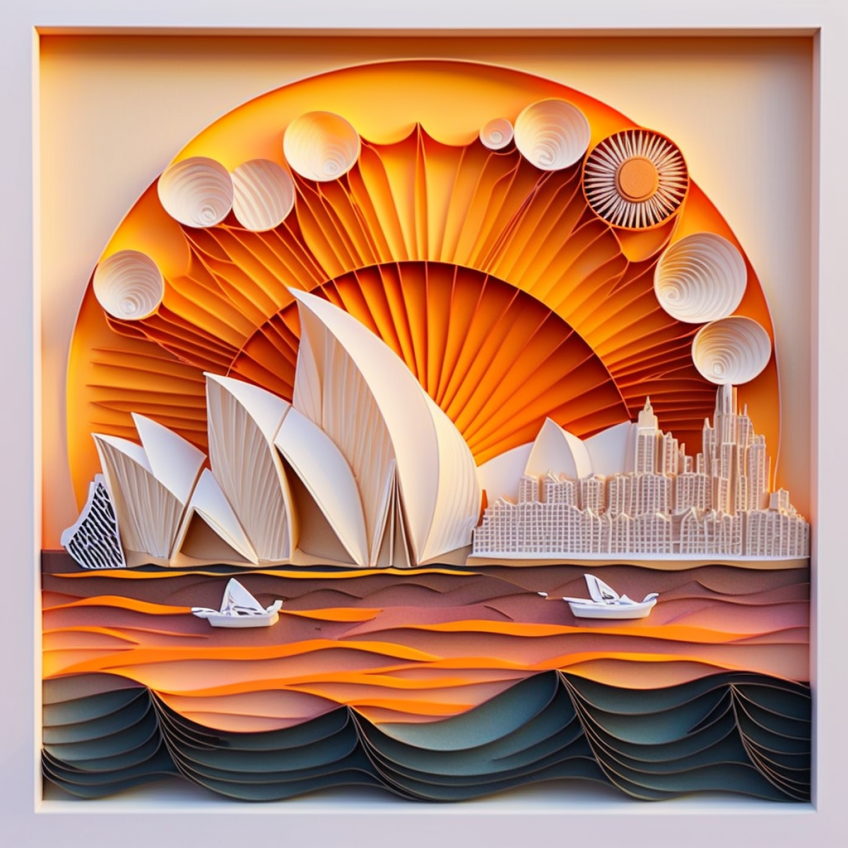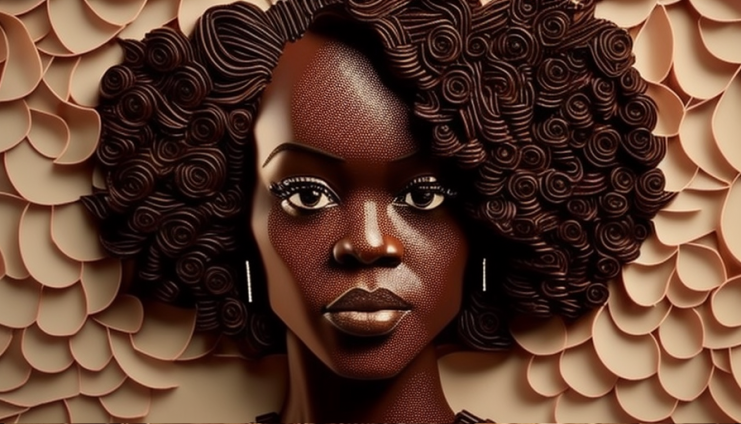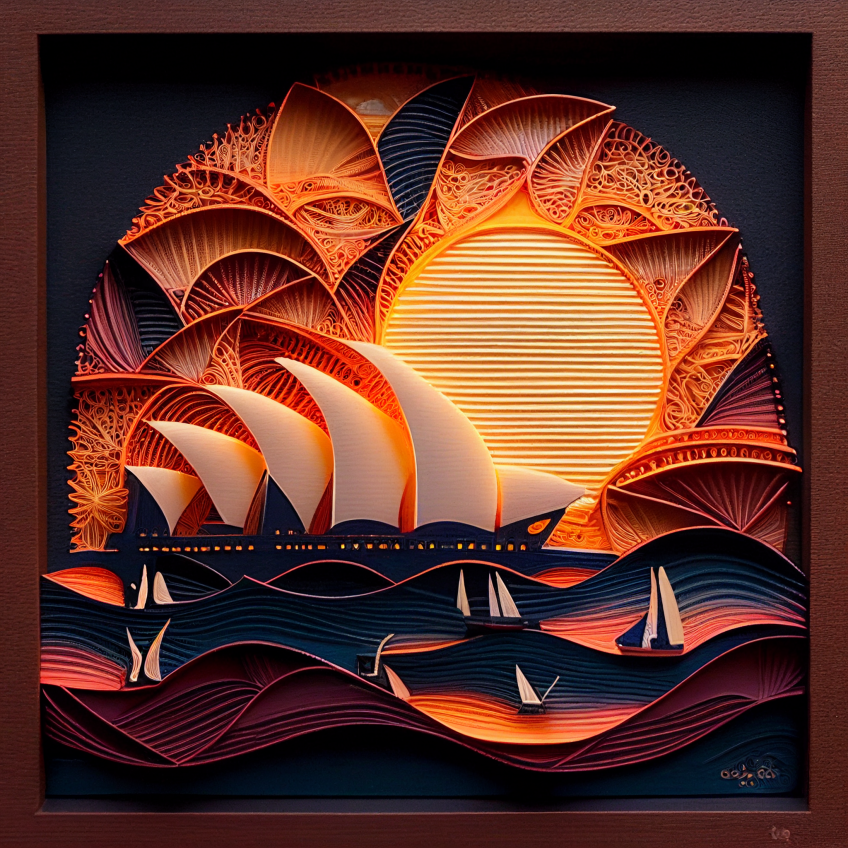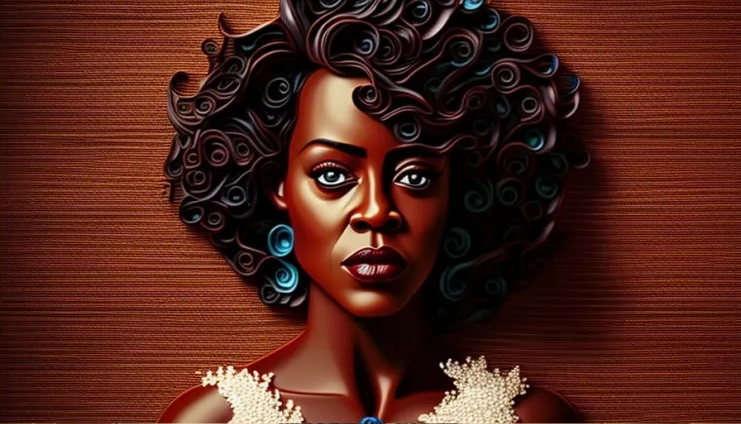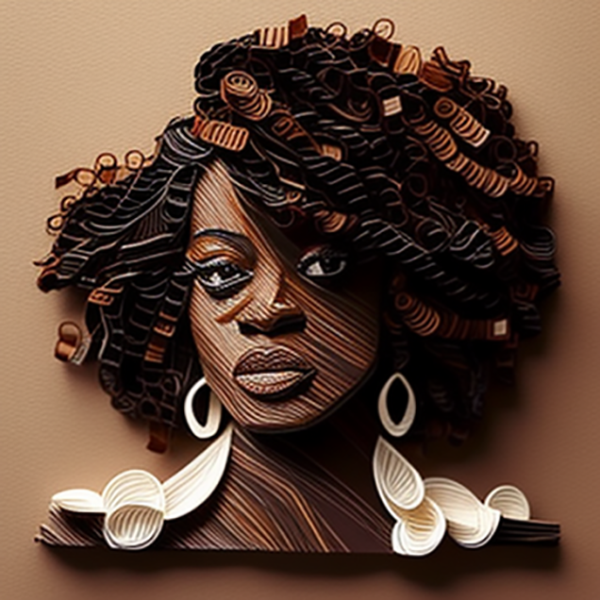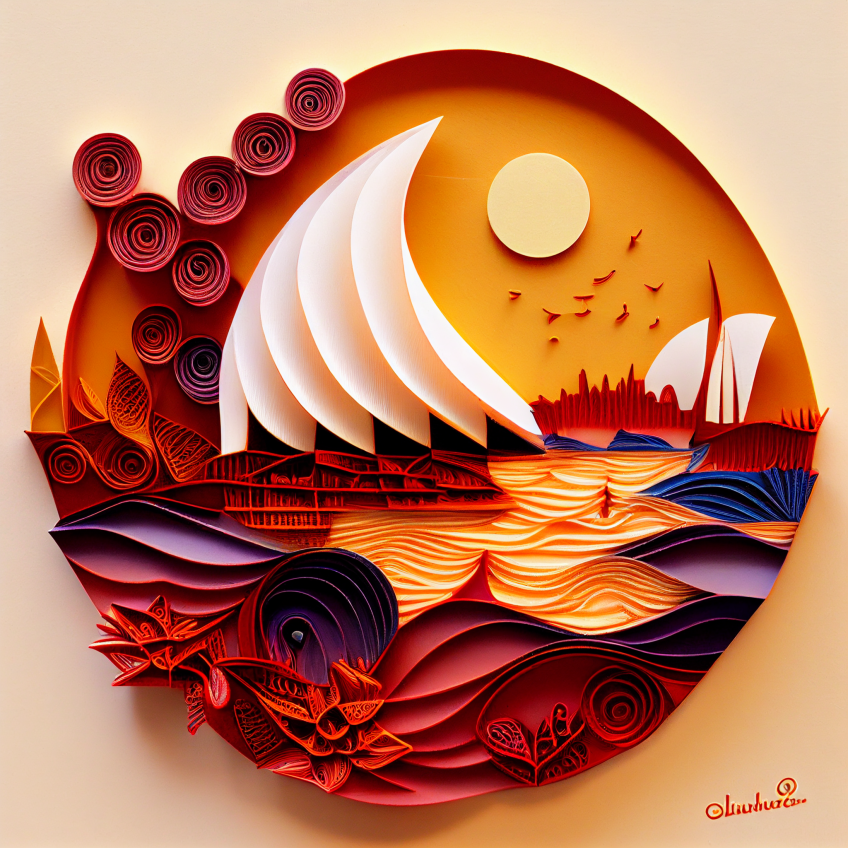Quilling in AI
A few years ago, I watched a video that suggested ways to use 3-D modeling software to create quilling models before you implemented them on paper.
While I appreciated the approach, it seemed to me (at the time), that I could sketch out and create a quilled piece in the same amount of time it took me to model it using Houdini.
Fast forward a just a couple of years to Deep Dream Generator, MidJourney and the world of command line artificial intelligence that allows anyone who can type (or use Voice-to-text software) to create and modify new and existing images in seconds. I was able to type a few ideas in of images I want to quill (the Sydney Opera House, Viola Davis, a botanical garden, and a seaside city) and receive a few ideas of how artificial intelligence would imagine them as quilled pieces:
Some of the images above look similar to the work of acclaimed paper artist (which does not make some artist happy), while others would question whether the piece should be classified as quilling.
I recognize this approach to computational creativity raises a lot of questions that are being debated amongst artist as well as programmers. Can an intelligent agent truly be creative? If you recreate the piece in a different modality, can you really call it original artwork?
I can only speak for myself. The irony is not lost on me that using this tool helps me to create in an art form that is not normally associated with high tech processes. One of the beautiful things about quilling is how minimal it is in terms of access and creation. AI quilling does not replace some of the benefits of quilling (improved dexterity and fine motor skills). Also, while it is easy to create an initial piece in AI, it takes time and patience to customize a digital piece using these digital tools or other photo-editing tools. I will keep learning more about how these tools work through experimentation. This doesn’t mean that I will rely on AI to produce an idea for me. It just means on the days when I am in a creative rut, I have another way to break that block. I am interested in your thoughts. Let me know what you think about this below.
Turn to the Arts
From Happify Daily
In times of distress, reaching for those watercolor paints or the guitar collecting dust in your closet may not be your first instinct. But the arts—visual, performing, creative writing, or even movement-based creative expression—may have a profound healing effect in difficult moments like these.
In fact, research suggests that creating art may reduce cortisol, the body’s stress hormone, and lead to a more positive mental state. Even if you aren’t feeling particularly creative, try to carve out some time where you can draw, paint, sing, or simply watch a performance that sparks joy or wonder…
Quilling is one of the most relaxing art forms. Students in our classes have reported that the act of quilling helps them destress from daily work pressure, and provides a sense of pleasure, peace and self-satisfaction by creating something beautiful.
Contact us for more information on how to schedule a class
Quilling Art, Craft, or Both…
quilling art, craft, or both?
Someone asked me if the classes I teach were Arts and Crafts or Arts OR Craft.
Good question!
It was a question that made me do a bit of research.
If you know me, I love to get the right answer, but readily admit when I don’t know if my answer is correct. I did some searching and found a site that offered a direct comparison.
I took some time to find a succinct answer that describes the difference between the two. I appreciated this definition: Art is described as an unstructured and open-ended form of work; that expresses emotions, feelings, and vision. Craft denotes a form of work, involving the creation of physical objects, by the use of hands and brain.
In my classes, you learn both art and craft. I will show you the (craft) foundations of quilling; how to make the basic shapes, and if you so choose, to make them uniform and replicable. But the items do not have to be replicable. You are welcome to take what you learn and create a unique image that can’t easily be duplicated (art).
Resource for All Hobby and Crafting Enthusiasts…(including Quillers).
Resources for locating quilling templates and tutorials
As I mentioned a couple of weeks ago, I was extremely excited when I started quilling. Immediately I wanted to find all of the resources out there to help me learn how to be a better quiller. Over the next few weeks I will write about resources. The first resource I share, however, will be beneficial for crafters in general. While looking up resources, I found a database dedicated to crafting. According to EBSCO Industry, the company that curates the database, The Hobbies & Crafts Reference Center is a full text database accessible via a custom EBSCO interface designed primarily for use in public libraries. Content in the database includes a collection of core, proprietary articles covering over 140 topics, as well as licensed periodicals, books and video that focus on categories commonly referred to as hobbies and crafts and is available in high-quality PDF format. Features include the ability to search the Hobbies & Crafts interface by category, view all available topics and browse popular resources related to the area of Hobbies & Crafts. Quilling is still gaining in popularity, but I was able to find dozens of tutorials available for download on the site. For hobbies that are more popular such as Beer and Wine Making for example, you get an organized collection of resources that includes links for the various types of information you might want about the topic. If your library does not have this resource, you can talk to your librarian and request they consider purchasing access to it.
Screenshot from The Hobbies & Crafts Reference Center that focuses on Beer and Wine Making
History of Quilling
The history isn’t very long, but provides you with insights on how and why quilling became popular with the rise of paper.
The history isn’t very long, but provides you with insights on how and why quilling became popular with the rise of paper. Most places that have written about the history of quilling (which I will link to throughout this article), say quilling began as a craft sometime around the 15th century. The North American Quilling Guild believes quilling could have started a few centuries earlier. For example, Spruce Crafts believes it may have started in the 13th century in China, around the time paper was invented.
My Modern Met shares, “it is believed to have been created by French and Italian nuns and used to decorate religious objects in an effort to save money. The filigree was fashioned to simulate carved ivory and wrought iron—two very costly details”. Relatedly, nuns sometimes used gold-gilded paper(trimmed from the edges of books) to make the decorations look like metal. Spruce Crafts reveals quilling resurged in popularity in the 18th century as a "suitable" pastime for the women of the aristocracy. While Quilled Creations explains that this art form was popular in the American colonies. “However, based on the lack of historical samples, quilling seems to have lost its popularity during the late 1800's”.
My guess for the reason the history is so spotty and not many products exists from previous centuries is due to the malleability of paper. This quality of paper is great for quilling, because it can be shaped in so many ways, and inexpensive. However, this feature makes paper products easy to destroy if not handled properly. Today we have more resources to protect work from damage, such as sealing it with a glaze. Alas, this may be why there are not many older examples of quilled pieces of work made from paper. Quilled Wonderland has collected the stories of a few older pieces that survived the times.
Aside: You may notice that the phrase paper ‘filigree’ pops up a lot when exploring the history of quilling. Filigree is decorative or ornamental metal work. The metal flower, as well as the embellish found within the larger petals pictured is similar to shapes and patterns that can be quilled with paper.
Gold filigree intricate work from Portugal. Photo by Ss.analuisa - Own work, CC BY-SA 4.0, https://commons.wikimedia.org/w/index.php?curid=47816424
Quilled paper flowers by All My Quills.
How I Started Quilling
Here is some inspiration on how to get started quilling.
Hi All,
I figured I would share a little bit of encouragement about quilling. The first picture is the first item I quilled. I call it “Joy”. Just kidding. It’s really a collection of shapes that I later realized could be rearranged to make flowers.
When I started quilling it was quite by accident. I was learning how to make greeting cards through various YouTube channels when I stumbled upon a card that was quilled. I thought it was beautiful. I watched the video, learned it was quilling, and looked up what it meant to “quill”. During that search, I learned about Yulia Brodskaya and that was it! I was hooked. I went to work… and created what you see here.
It was okay for a beginner, but nothing close to Yulia’s work (which is not really quilling, but paper art). However, that is okay. You have to learn how to walk before you can run. The first picture illustrates me walking. The second picture (not even two years later; inspired by the Disney Princess, Tiana) shows me moving a bit faster. I am still learning how to run (one day with scissors)! I am a life long learner.
If you stick with this blog, I will take you on my quilling journey, and show you what I know as I go along. The beautiful thing about quilling is that it is really a community activity. Everyone I have met on this quilling journey has been pretty supportive, and wants to teach others, (so we others with whom we can quill ).
My goal is to post once per week. (Maybe more when time allows). My post will always have something to do with quilling or paper arts and crafts. I will share what I am working on, what I am learning, what I reading or watching (as it relates to paper crafts). Feel free to ask questions or share your work! I would love to see what you are quilling, as well as get feedback on my creations.
Well, thank you for your time. I have a few minutes left in the day…just enough time to roll a few more circles before I get ready for tomorrow. Be well friends… and don’t forget to take some time to chill and quill.
This is the first picture. The picture is comprised of various quilling shapes that have been placed together as flowers, as well as paper hearts.
This quilled picture was inspired by the Disney Princess, Tiana. It is a portrait picture of Tiana in her gown (waist up). She has her her head resting in one hand and is looking up.


